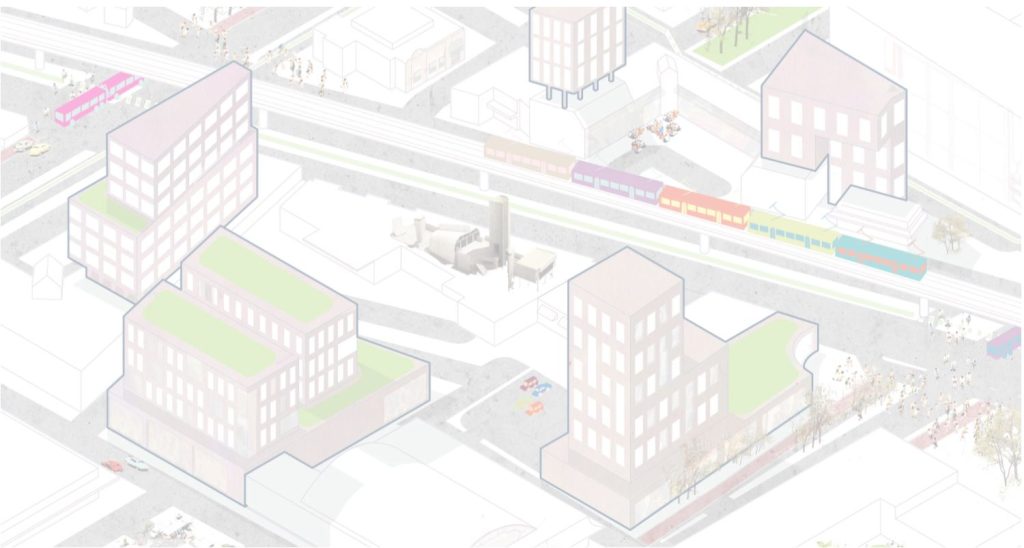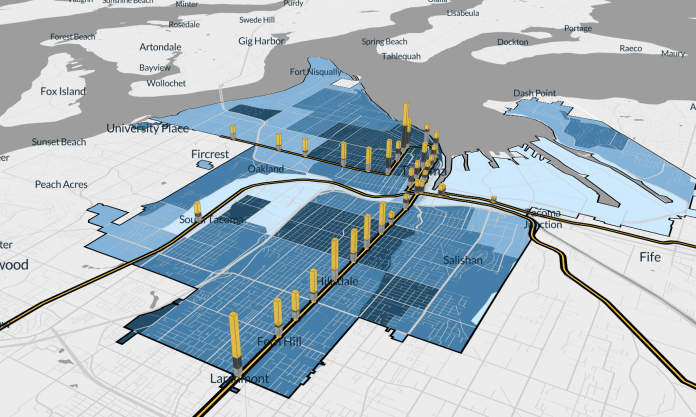
How many new homes could be created if cities in the Puget Sound region legalized denser housing near transit stations and where would they cluster on a map?
A recently released tool from the Urban Institute demonstrates the impact of zoning on housing affordability and accessibility in Puget Sound cities by examining four potential zoning changes policymakers can pursue to increase housing development near transit. The tool builds on research Urban Institute released in January laying out the potential zoning reform has to alleviate the housing crisis and better distribute housing throughout the region.
While the data is currently only available for Puget Sound, its creators hope that the potential changes they display could inform our national conversation about housing scarcity and affordability. In 2023, the United States is estimated to be short a whopping 6.5 million homes. By some counts, Washington State has the most severe imbalance between population growth and new housing creation in the nation. If such patterns continue unchanged, the gap between housing needs and home construction will never close.
“Single-family zoning ordinances have contributed to a nationwide shortage of new homes. They encourage metropolitan areas to sprawl out horizontally, which incentivizes car use, prevents the development of more affordable homes, and diminishes the vibrancy of urban neighborhoods,” said lead researcher Yonah Freemark in a press release. “Re-zoning areas that currently restrict development can help address the affordable housing shortage, incentivize demand for public transit, and reduce pollution.”
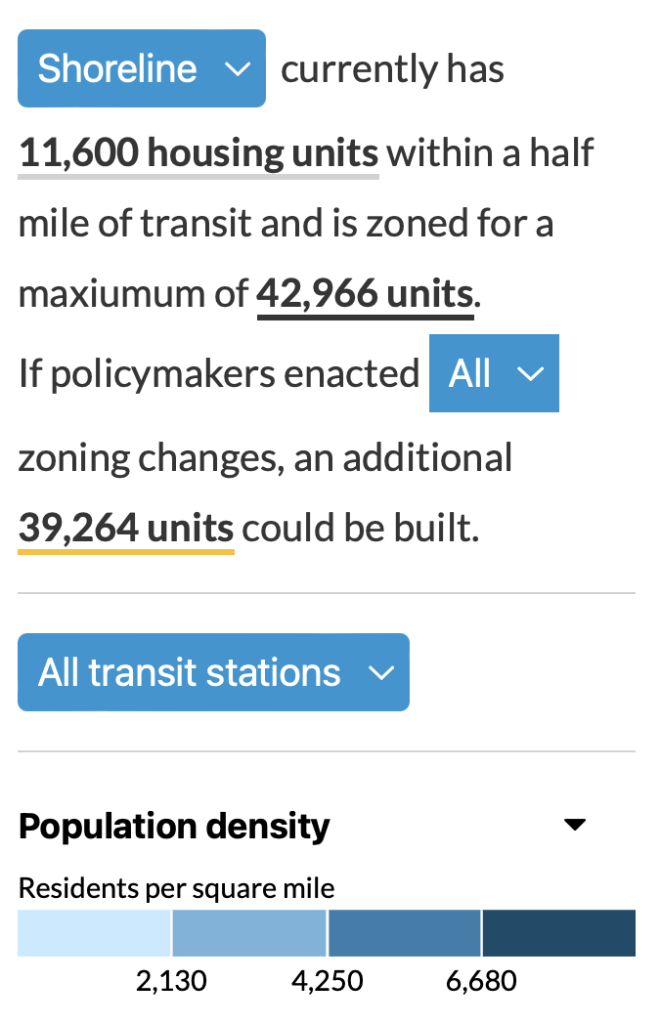
According to Urban Institute, key zoning reforms visualized by the tool include:
- Plexify: For cities with large areas restricted to single-family zoning, “plexifying” zoning ordinances—or allowing duplexes, triplexes, and quadraplexes on existing lots—would allow new homes to blend into the existing environment and increase density.
- Multiply: In urban areas with existing or planned transit stations, doubling the number of allowed units near stations could dramatically increase available housing and reduce the need for parking.
- Legalize: Policymakers could go beyond residential rezoning and legalize the construction of multifamily housing on properties currently zoned only for commercial and retail uses. These changes could encourage developers to repurpose surface parking lots into apartment buildings or construct mixed-use buildings with condominiums atop street-level businesses.
- Missing Middle: Increasing small multi-family housing developments from four to twelve units would create infill housing in urban neighborhoods.
Users can select whether to include light rail, bus rapid transit (BRT), or both stations when reviewing the impacts of these potential zoning reforms. They can also select “all” to see how much housing would be creating if all four zoning reforms were implemented together.
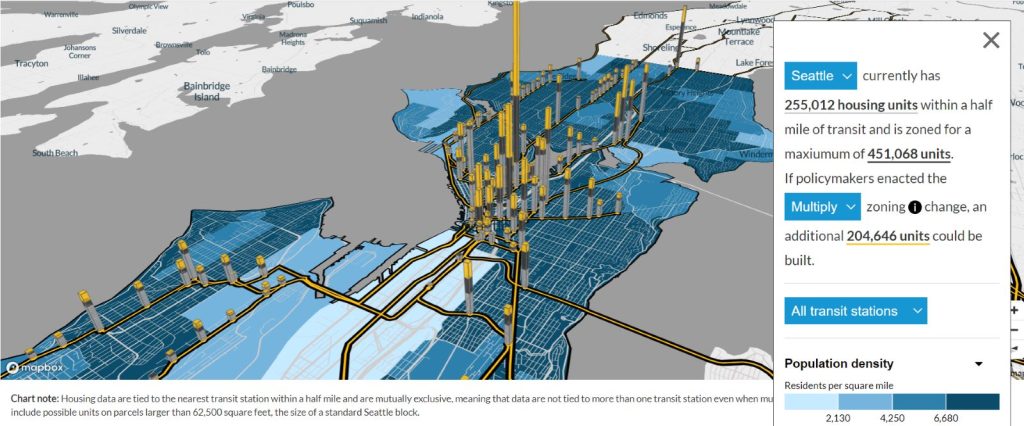
The tool also visualizes where these new units would appear on the map while also showing the city’s population density.
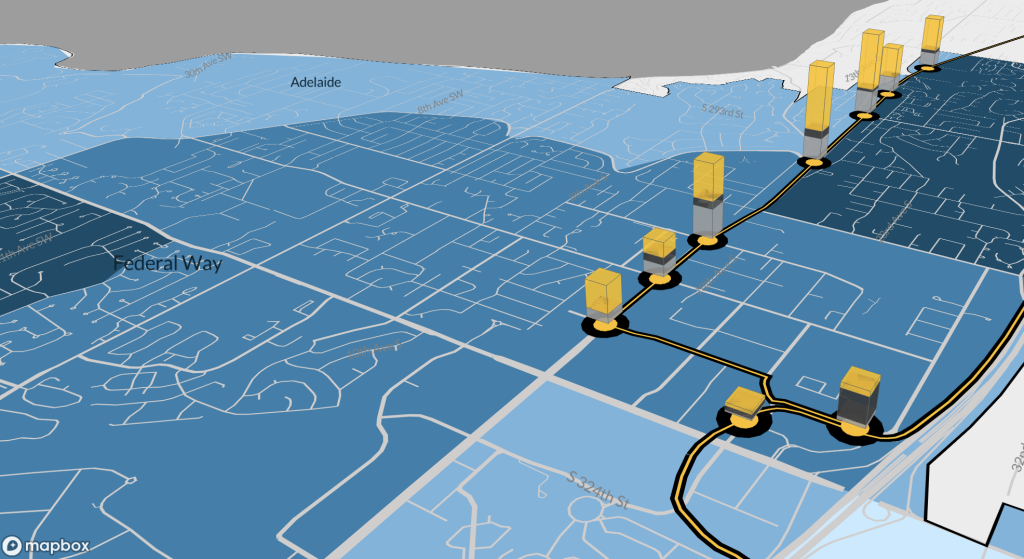
In the past legislative session, Washington State made a big step forward toward creating more housing in cities with the passage of House Bill 1110 which requires that jurisdictions permit the creation of missing middle housing ranging from duplexes to sixplexes depending on the jurisdictions size and proximity to a major transit stop. However, a transit-oriented development (TOD) bill which had a lot of momentum early in the legislative session failed to pass.
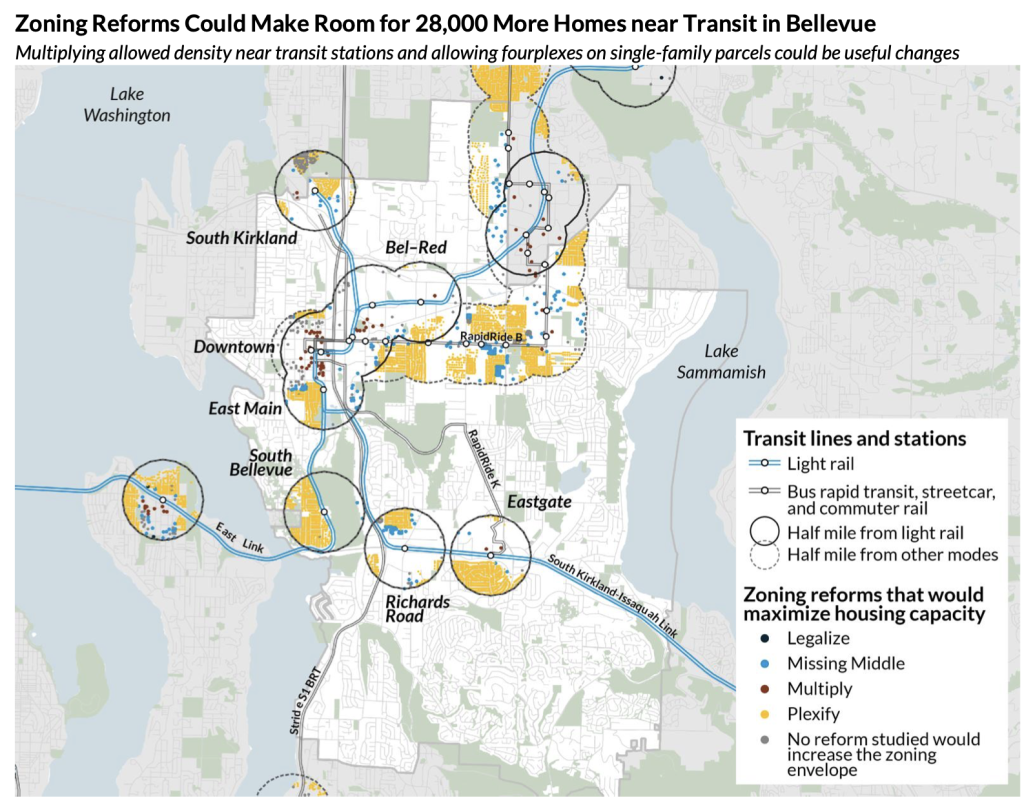
Urban Institute’s new tool provides policymakers and advocates with data to continue to push forward on transit-oriented development legislation. Readers can also learn more from two publications from the Urban Institute: a comprehensive report presenting each Puget Sound city as a case study and a collection of stories from across the country that showcase the human side of housing policy and how it changes people’s lives.
Correction: This article was updated on 6/16/23 to reflect that it was the Urban Institute that published the new tool and collection of stories on housing rather than Urban Land Institute. We regret the error.
Natalie Bicknell Argerious (she/her) is a reporter and podcast host at The Urbanist. She previously served as managing editor. A passionate urban explorer since childhood, she loves learning how to make cities more inclusive, vibrant, and environmentally resilient. You can often find her wandering around Seattle's Central District and Capitol Hill with her dogs and cat. Email her at natalie [at] theurbanist [dot] org.

